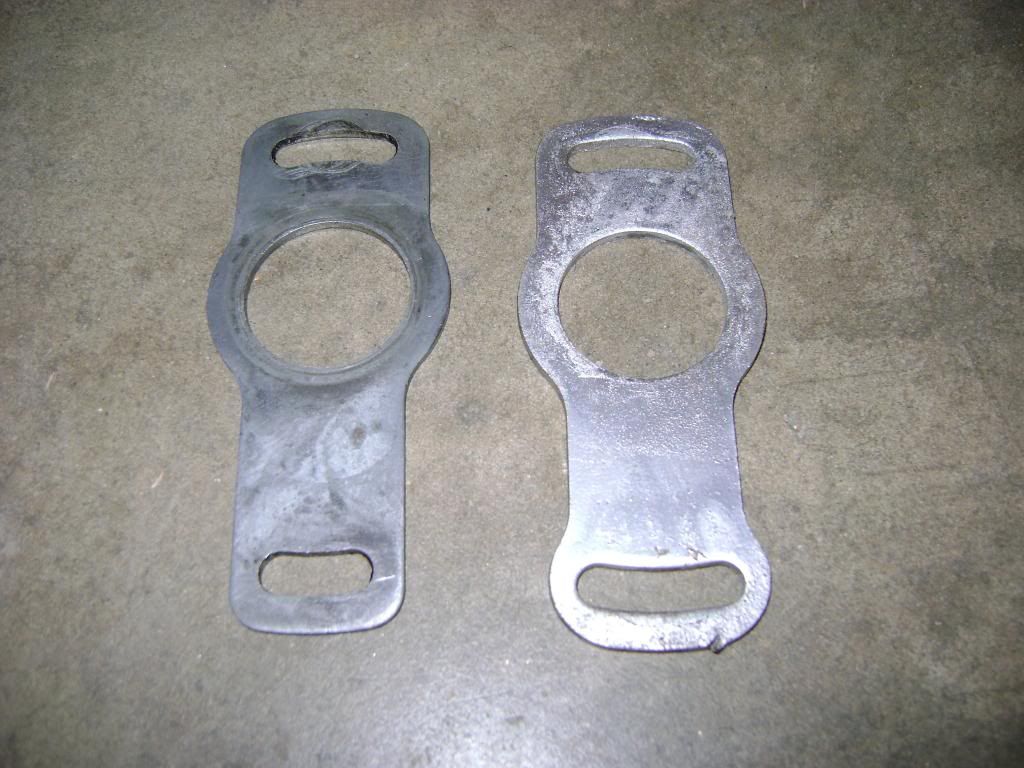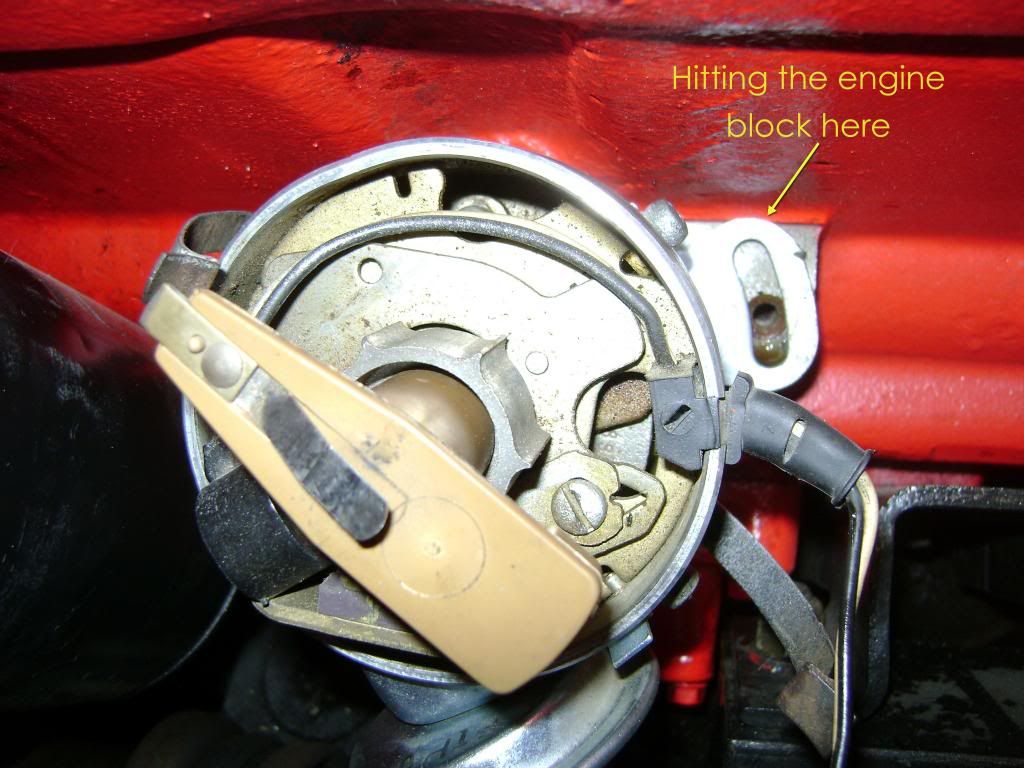Converting from points to HEI. Did the equipment installation this weekend with help from some of you in a different thread, thanks.
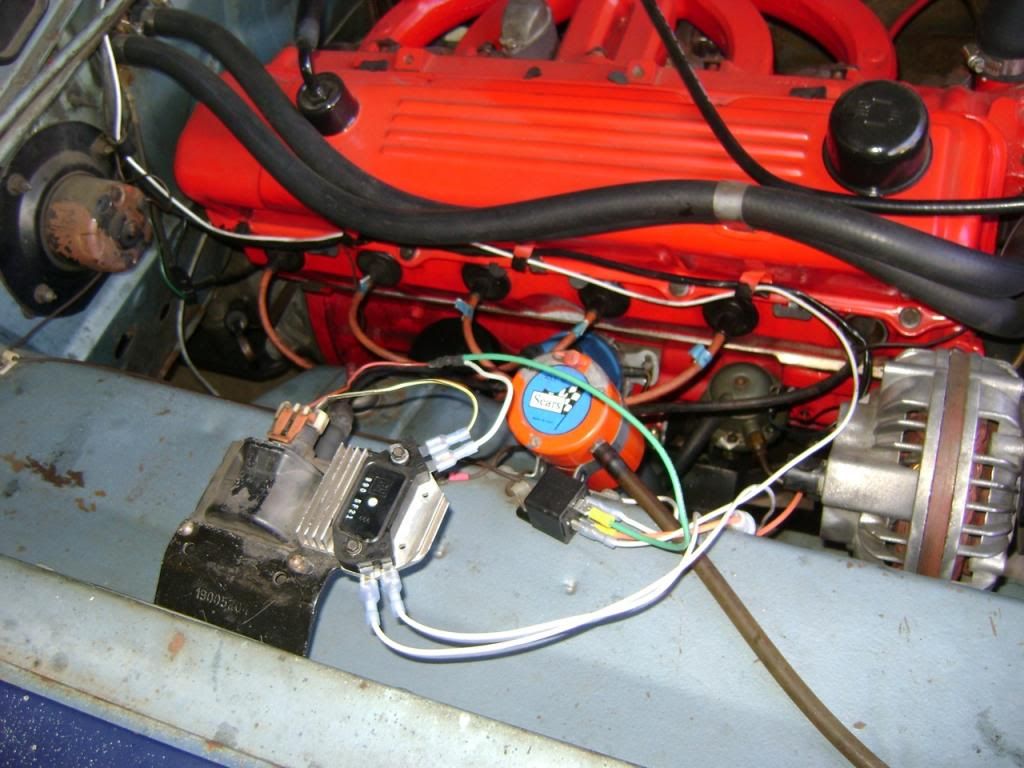
Update:
I have no spark at all. Attempting to diagnose. Here's some things I did in the installation that may or may not affect whether I have spark:
1. Installed an original, previously-used GM HEI setup (bracket, heat sink, e-core coil, module) purchased from a parts yard. Swapped the module for a new module that gives the correct needed waveform. I assume I have the positive and negative coil terminals designated correctly since the coil is NOT marked at all. Oval connector on the top has three pins inside. I assumed orange wire/pin was positive, the white/black striped wire/pin was negative. There's a center pin in the connector that should be for a tach. Not used.
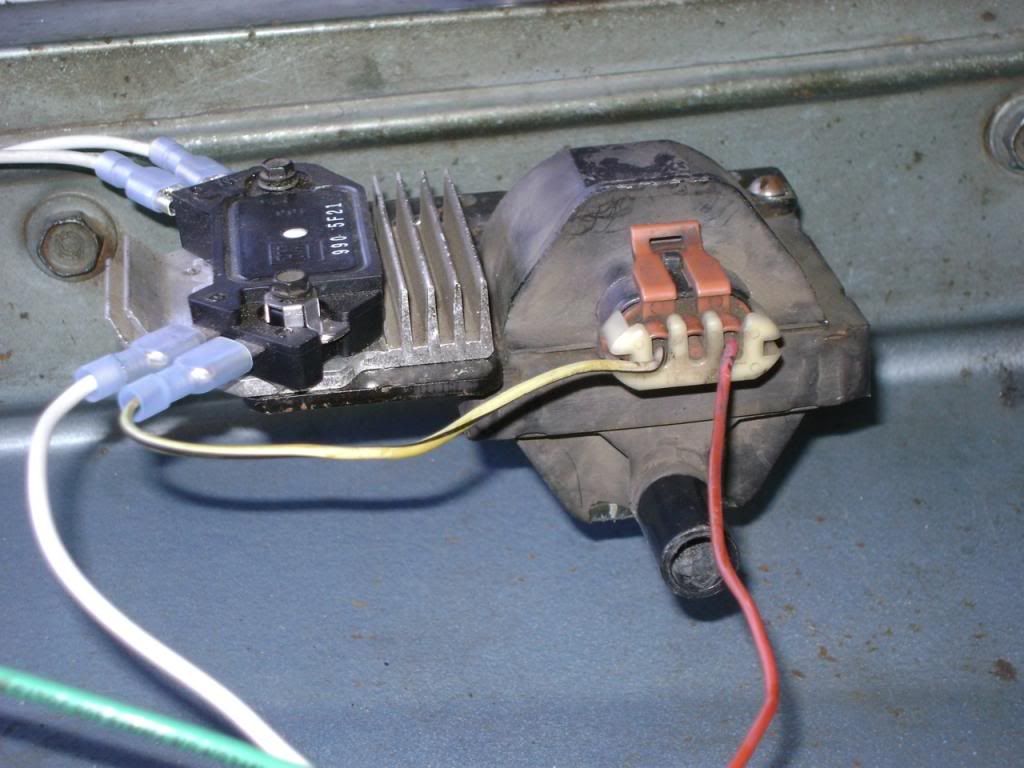
Question A: How do I test the original e-core coil to determine it's good?
Question B: Should the orange wire/pin be positive, and the white/black wire be negative?
Question C: If you try to measure the resistance rating on the coil-to-cap cable, what is a good/acceptable reading on my multimeter, measuring ohms? I'm using the original cable supplied with the setup, between the coil output and the distributor cap. It's a male-male cable. I am trying to determine it's condition and if this could be contributing to my problem. If I'm reading the multimeter right, it's resistance rating is measuring about 700 ohms right now.
2. When I swapped the original GM module for a new module with the correct waveform, I wiped dielectric grease over the bottom of the new module before attaching it to the heatsink. Assume this is correct.
3. I purchased a "rebuilt" 1977-1980 super six PN:3874876. Here is my original thread I posted after buying and receiving two incorrect distributors. To be honest, I don't know how to tell if the correct super six distributor I bought has actually been rebuilt. It seems dirty inside, and it's covered by some kind of silver paint outside. I was preparing to install the distributor last night, and I noticed the drive gear was chipped. Rebuilt? I think not.... I swapped the drive gear from one of the wrong distributors and installed the super six dizzy.
Question A: How do I know the correct distributor has actually been rebuilt?
Question B: How can I test that the components inside the distributor are functioning as required?
Question C: I've read a couple posts that state if you replace the distributor drive gear, that new gears sold have the roll pin hole drilled in the wrong location. I took the drive gear off of the incorrect distributor (below) and installed that. I wonder though if it is a used gear or a new gear? It looks like it has had minimal wear and has never been exposed to oil. What would a hole drilled in the wrong location do? Look at the picture and tell me if this gear could be causing a problem with getting spark. I wouldn't think so. I'm wondering if simply removing and installing it on my super six dizzy would cause other problems....
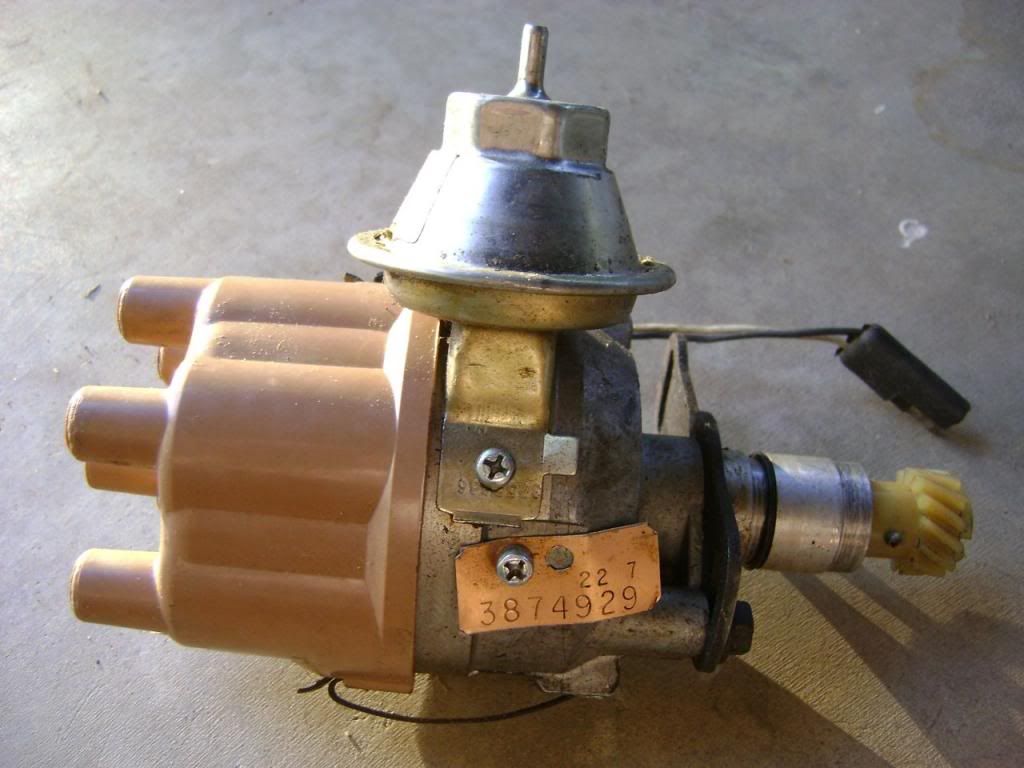
4. I tapped #30 on the relay to the Alternator B+ (the "Output" terminal, that post that sticks out from the back). That is correct, yes?
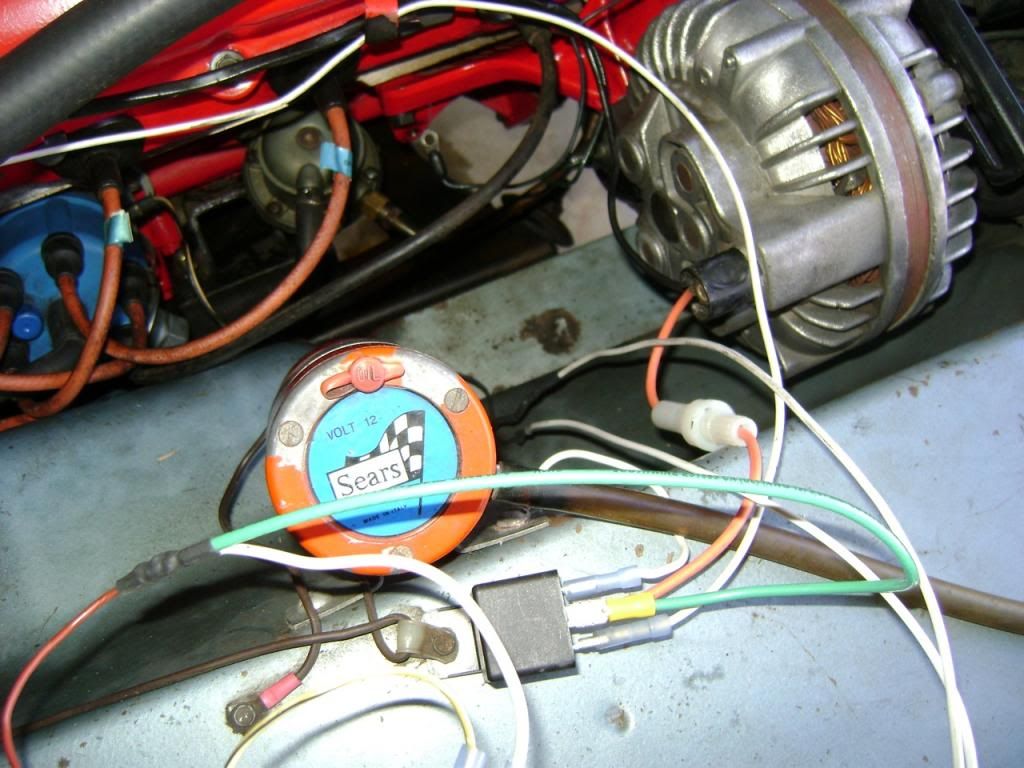
5. I tried swapping the module right-side connections that connect to the distributor leads in an effort to get it started. The engine just cranked and it had no effect at all.
6. I already have a Standard Bluestreak CH-410X dizzy cap and the Echlin MO-3000 rotor. Installed these on the super six dizzy. They should be fine.
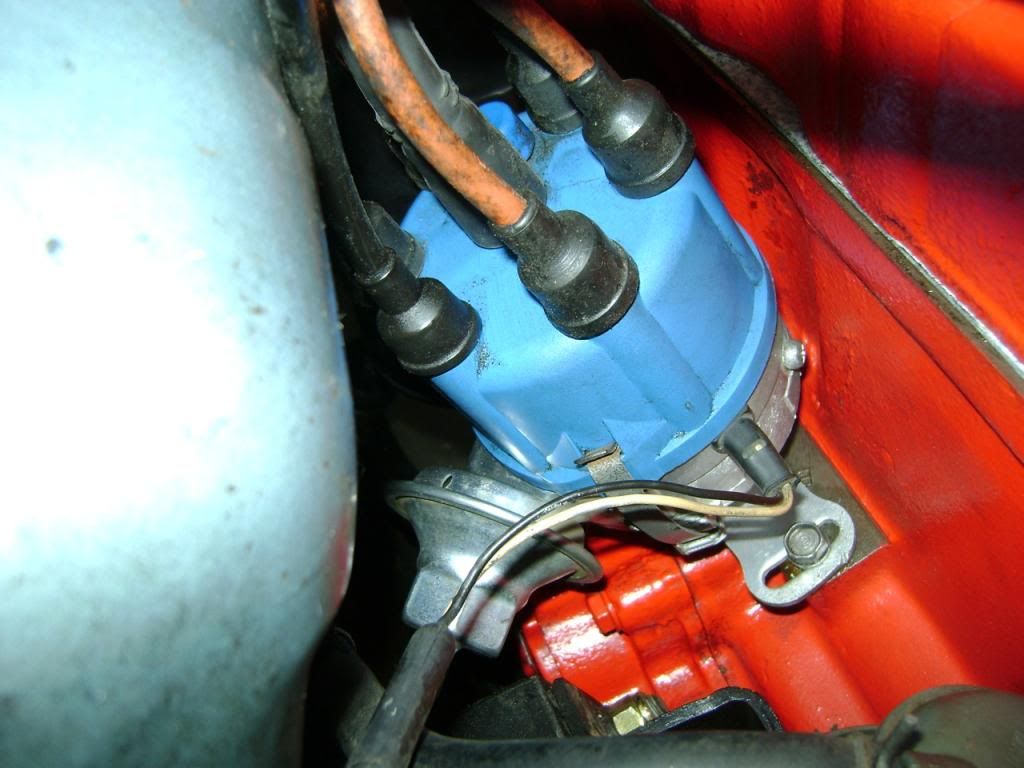
Can anyone guide me as to why I'd have no spark at all? I have double and triple checked my wiring against the instructions on Slant Six Dan's original HEI conversion post.
Thoughts welcomed! I need to get the Dart back running asap. Don't want to have to swap back to points if I don't have to.
